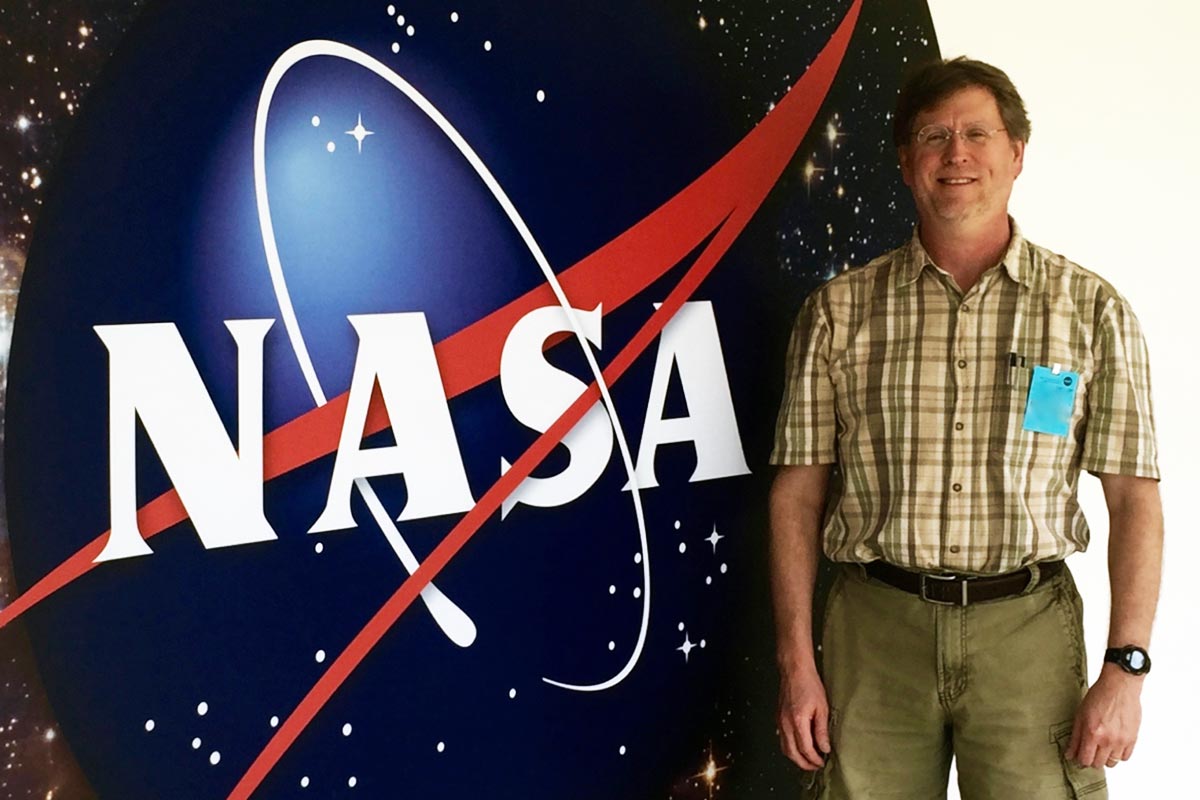COURSE INSTRUCTOR
Mark Chandler

Mark Chandler began his earth science career driving a dune buggy to work. As an eolian sedimentologist (the science of wind blown sediments) he studied sand dunes and modern desert processes. Earth scientists often examine modern environments to gain insights into how ancient geologic formations were created. The ancient formations that Dr. Chandler was trying to understand are now exposed as the majestic sandstone cliffs of the southwestern U.S., which themselves are the remnants of a 200 million year old desert that covered North America during the Jurassic Period. His curiosity grew as to what could have caused the Jurassic climate to be so different and, logically, this led Mark from modern deserts to... New York City?
While working on a project utilizing space shuttle photos of deserts, it occurred to Mark that he might also be able to learn about the Jurassic using NASA's other emerging high-tech capability, computer climate models. New York City is home to NASA's Goddard Institute for Space Studies (GISS) and, when Mark arrived in 1987, the scientists at GISS were building complex computer models to simulate Earth's future climate. As a graduate student at GISS, Mark helped retool the NASA global climate models to simulate ancient climates and to use them to analyze the role of continental drift, changing levels of carbon dioxide, and altered vegetation in past climates. Of course, while that research was emerging, so too was a more serious concern about future global warming and, since Earth history is chock full of climates that were warmer than today, Dr. Chandler's curiosity about warm climates of the past steadily became less of an academic-only pursuit and more of a societal imperative.
During the last 20 years Dr. Chandler's climate modeling projects have spanned time periods from the Neoproterozoic, 1 billion years ago, to the future. His research has been funded by the National Science Foundation, the U.S. Geological Survey, and of course, NASA. Currently he focuses on a period of extreme global warming around 3 million years ago, during the Pliocene Epoch, which is the most recent period in geologic history where temperatures were as high as are projected for later this century. In fact, the Pliocene is perhaps a glimpse into our future, with elevated carbon dioxide levels, altered ocean circulation, smaller polar ice caps, and higher sea level. Dr. Chandler now works with scientists around the world to help improve our understanding of this "last great global warming."
In addition to his climate research, Dr. Chandler has also worked for many years to improve access to NASA's global climate models. His Educational Global Climate Modeling (EdGCM) Project develops software that makes it possible for teachers and students to operate NASA climate models on desktop computers. Through the EdGCM Project he encourages educational experiences that immerse people in realistic global climate change research. He also hopes that by opening the lid on the black-box of computer climate models, it will help reduce people's skepticism about how scientists make projections of future climate change. Many universities, schools, and research institutions use EdGCM as a means of lowering the barriers to participation in the science of climate modeling.